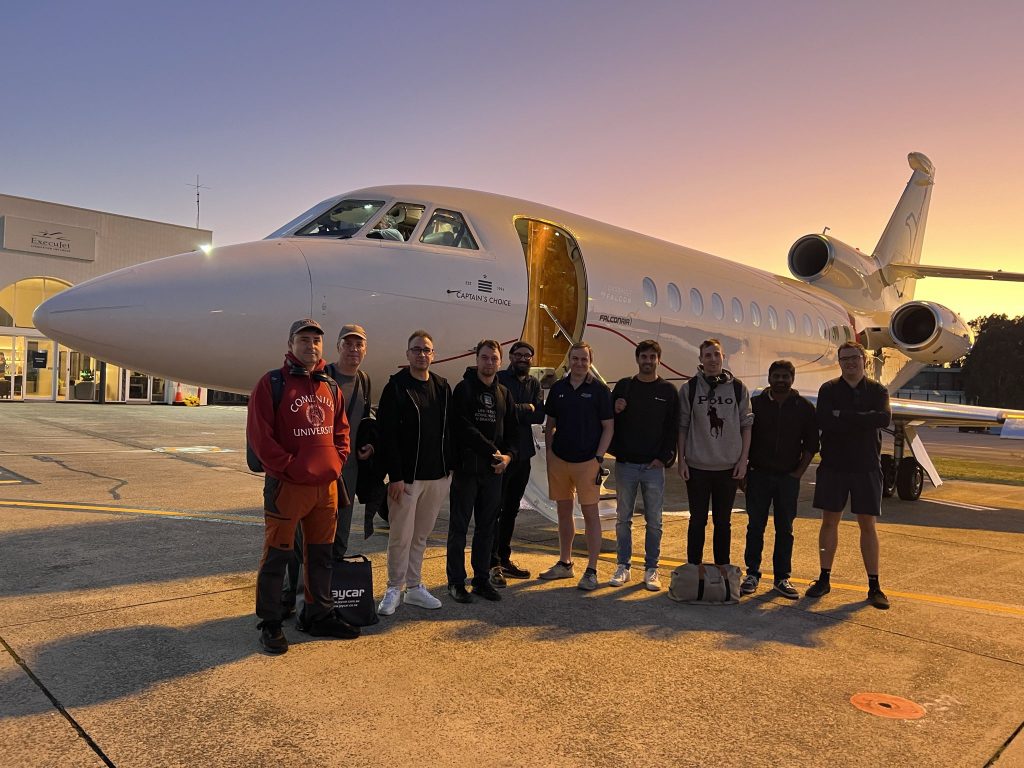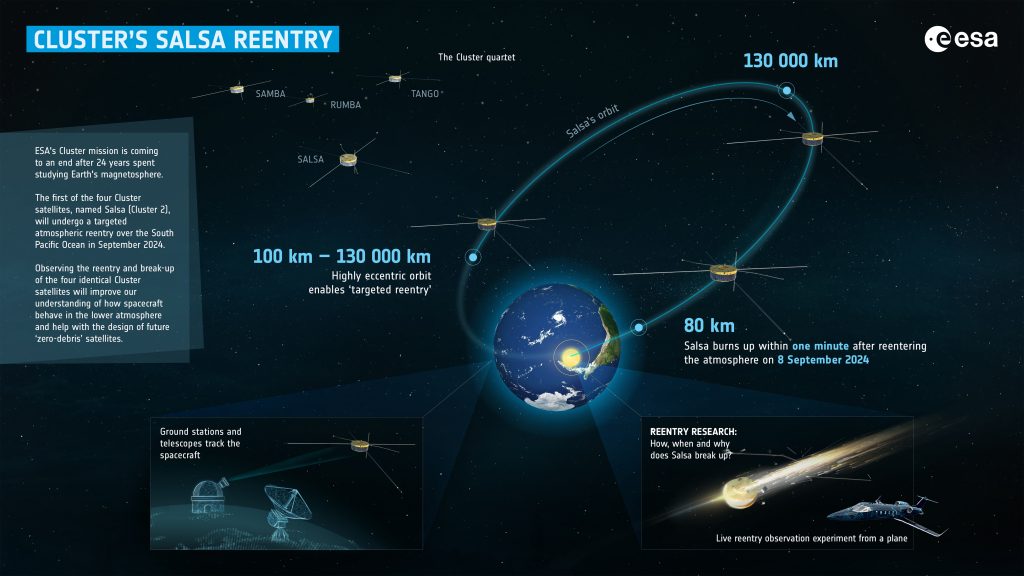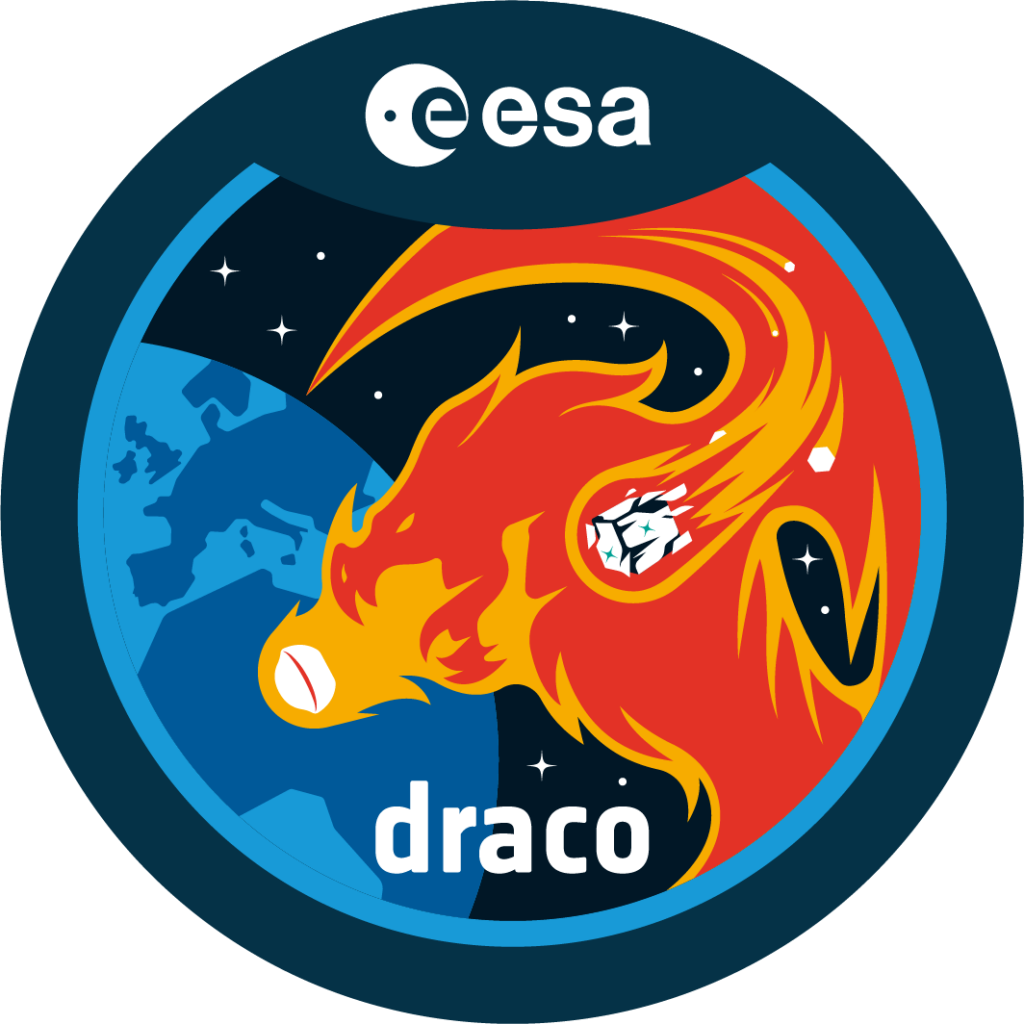It’s time for the second dance: Rumba’s targeted reentry is coming up, with the second Cluster satellite expected to reenter the atmosphere between 18:20 and 21:45 CEST on 22 October 2025.
As its four identical satellites each come down, ESA’s 24-year Cluster mission gives us a farewell present in style with a unique, quadruple boost to reentry science.
The unpredictability of most reentries makes it hard to observe and learn from them, despite reentries having become an everyday occurrence. ESA’s new targeted reentry technique determines the reentry time and location, making a reentry both safer and better observable.
It ensures a clean end to the Cluster mission that goes beyond international standards, showing the Agency as a world-leader insustainable space exploration and confirming its Zero Debris commitment.

Rumba’s reentry
Salsa’s targeted reentry over the South Pacific Ocean Uninhabited Area on 8 September 2024 was the very first of its kind. Rumba will now reenter Earth’s atmosphere exactly the same way (see infographic).
Its operators at ESA mission control adjusted the satellite’s trajectory one last time in August 2024, setting Rumba on its final path, targeting a remote corner of the South Pacific Ocean safely away from land. As the reentry comes closer, the prediction will become even more precise.
Learn how a targeted reentry works.

Next up (or down!)
After Rumba comes down, there will be two Cluster satellites left: Samba and Tango. Both were lined up for their own targeted reentries in November last year.
Their last dance and reentry into the atmosphere are expected about 24 hours apart around 1 September 2026, once more over a safe, remote part of the South Pacific Ocean.
And to learn even more about reentries, our Space Safety programme is building the Draco mission. Draco will have cameras and sensors observing a reentry from the inside of a satellite throughout its reentry and break-up.


Discussion: no comments